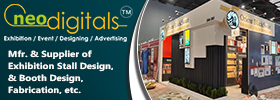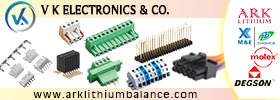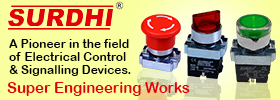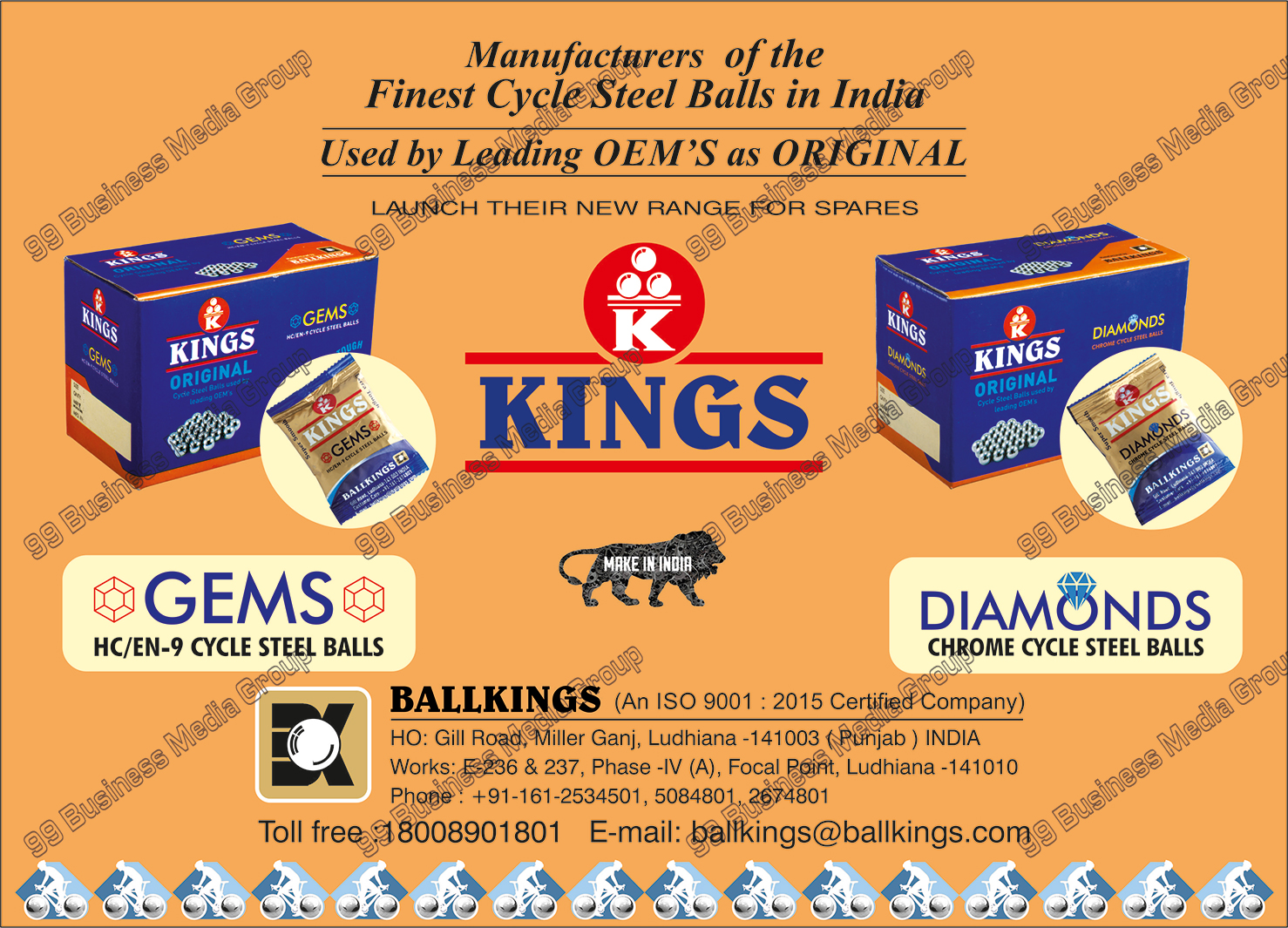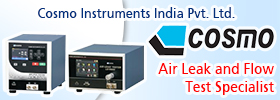Sale Leads
Eaton UPS are one of the best brand in Online UPS and its after sale services are the best.
The automatic volumetric liquid filling machine consists of a basic structure, a product transmission belt with an adjustable guide, and an optional safety acrylic cover; a pneumatic or mechanical bottle-stopping facility, nozzles, and syringes, an electrical panel, a motor, a sensor, an AC drive, and mains On and Off. Harikrushna Machines provides a wide range of products, including a semi-automatic volumetric liquid filling machine, a liquid bottle filling machine, an automatic liquid filling machine, an automatic bottle liquid filling machine, and a monoblock liquid filling machine. Automatic Liquid Filling Machine, Viscous Liquid Filling Machine, Automatic Filling and Closing Machine, Monoblock Liquid Filling Machine, Twin Head Liquid Filling Machine, Volumetric Liquid Bottle Filling Machine, Rotary Bottle Liquid Filling Machine, Liquid Filling Machine Manufacturer, Liquid Filling and Capping Machine, High-Speed Liquid Monoblock Machine, Semi-Automatic Volumetric Liquid Filling Machines, Automatic Syrup Filling Machine, Automatic Liquid Filling Machine, Twin Track Viscous Liquid Filling Machine, High-Speed Liquid Monoblock Machine, Liquid Bottle Filling Machine, Automatic Liquid Filling Machine, Fully Automatic Liquid Filling Machine, Multi-Head Liquid Filling Machine, High-Speed Liquid Filling Machine, Viscous Product Filling Machine, Automatic Paste Filling Machine, Automatic Tube Filling Machine, Automatic Ointment Filling Machine, Automatic Honey Filling Machine, Automatic Shampoo Filling Machine, Automatic Hair Oil Filling Machine, Automatic Gel Filling Machine, Liquid Soap Filling Machine, Honey Filling Machine, Sauce Filling Machine, Automatic Wick Inserting Machine, Rotary Oil Filling Line, With Liquid Filler are Most important Equipment for Liquid Packing Line and Industries. e.g., cosmetics, beverages, pharmaceuticals, and pesticides. Salient Features: 1) The filling machine is manufactured or developed following GMP standards. 2) The structure is made of MS clad with SS 304. 3) Rigid, vibration-free construction for trouble-free performance 4) SS matte-finished body. 5) The pharma- and food-grade PVC-braided tubes are used for filling purposes. 6) Place a drain tray around the machine platform. 7) Drip tray under the conveyor. 8) An elegant and simple control panel gives you complete control over the operation. 9) All interlocks must be shown on the control panel. 10) Fill accuracy of less than 1% on a single dose. 11) If there is no bottle, then there is no filling system; the machine should stop at the home position. 12) Diving nozzle device. 13) Minimal time required to transition from one bottle or fill size to another. 14) A self-lubricating UHMW-PE guide profile for stainless steel slat chains provides a low friction wear surface and smooth, noiseless conveying. 15) pneumatic/mechanical bottle-stopping arrangement 16) Synchronized two AC drives for the motor and conveyor belt. 17) SS measurement scale for filling volume adjustment. 18) Safety guards for the conveyor gearbox, motor, and pneumatic cylinders 19) MCB is used for overload protection and prevention against short circuits 20) Overcurrent, voltage fluctuation, and short circuit protection built into the AC frequency drive Technical Specifications: Model: HMPL-VLF 1) Bottle size (Ø): 15mm Ø to 90mm Ø 2) Output speed: 30 to 120 Bottles/Minute 3) Filling Volume: 10 to 500 ml 4) Direction of Movement: Left to Right 5) Number of Syringes/Heads: 4; 6; 8; 10; 12 Nos. 6) Fill Size: 10 ml to 500 ml Glass/PET Bottles 7) Power Supply: Three Phase / 415V AC / 50 Hz 8) Air Supply: 4 to 6 Kg/Cm² (If pneumatic operated stopper) 9) Height of Conveyor: 875 ± 50 mm Adjustable https://harikrushna.com/product/automatic-volumetric-liquid-filling-machine/ https://www.youtube.com/watch?v=QgjyyAgVEfc
The Automatic Servo Liquid Filling Machine consists of a basic structure, a product transmission belt with an adjustable guide, a material storage tank, a pneumatic bottle stopping facility, SERVO-based Servo Liquid Filling Pumps, Servo Liquid Filling Nozzles, a safety polycarbonate enclosure (optional), an electrical panel, a motor, a PLC and HMI, and an AC drive. A high-low liquid level sensor in the tank is an added advantage. We Are Manufacturers Different Type Of Machine For Liquid Like. High Viscous Liquid / Viscous Liquid Servo Piston Filler Machine Is Suitable For Fill Viscous Liquids Like Viscous Products – Tomato Paste, Ketchup, Jams, Fruit Juices, Vegetable, and Mineral Oils Into a Glass, Pet Bottles, Metallic Or Plastic Containers, Bottle, and Jars. All Viscous Liquids And Capping, Induction Sealer, And Labeling/Sleeve Applicator Line Machinery Are Listed Below For Applications And Industry Installation By Harikrushna Machines Pvt. Ltd., To Pack The Liquid In Different Shapes And Sizes Of Bottles For Eg. Beverages, Cosmetics, Food, And Pesticides. Salient Features: 1) The machine is manufactured or developed following GMP standards. 2) The unit is compact and versatile in design. 3) The structure is made of SS 304. 4) Rigid, vibration-free construction for trouble-free performance. 5) The servo liquid filling machine has a unique design with German technology. 6) The contact parts, such as the filling nozzle and filling pump, are made of SS 316. 7) The pharma- and food-grade PVC-breading tubes are used for liquid filling. 8) Drain the tray around the machine platform. 9) Drip tray under the conveyor. 10) Easy to clean the base of the machine. 11) The storage tank is automatically controlled using high- and low-level sensors. 12) The machine is supplied with easy to clean inbuilt storage tank. 13) The drain valve below the filling tank & collection tray provides for flushing purposes. 14) Auto control valve for the suction line at the plant. 15) Filling is based on a diving system wherein nozzles go inside the bottle and fill it with the desired volume, and nozzles come out of the bottle. 16) A pneumatically (air) operated cylinder performs the diving and blocking of the products. 17) The air pressure indicator attached to the machine indicates a fault with the low pressure of the air supply. 18) A servo-powered filling pump that can quickly suck material from the storage tank to the nozzle end. This facility is for cleaning filling lines and the filling pump. The same function applies to all of the pumps together as well as to individual pumps. 19) An easy-to-use PLC for adjusting fill volume. 20) Each Filling head can be operated & monitored through PLC individually. 21) An air-operated NRV is connected to the discharge line. 22) Each filling head can work independently. 23) No spare parts are required for different product sizes or fill volumes. 24) Product changeover time is too low due to less usage of mechanical parts such as syringe sets, gears, chains, chain wheels, mechanical seals, etc. 25) If there is no product during the filling process, the machine automatically stops and indicates HMI. 26) With the help of a PLC-controlled on-and-off valve, the machine maintains the level of fill material. If the fill level falls below a certain level, the system will automatically stop and display a low-level fault signal on the HMI screen. 27) After the filling process is complete, there is no need to remove the storage tank for cleaning. This cleaning process can be done very quickly with the help of a drain valve. 28) All faults that occur during the operation of the machine, like low air pressure, low liquid level, no sample product for filling, etc., are displayed on the HMI. 29) PLC modes are user-friendly. 30) Due to the minimal usage of mechanical components, less maintenance is required. Technical Specification: Model: HMPL–PRE–RBF 1) Product MOC: GLASS/PET/HDPE Bottles/Jars 2) Liquid Filling Volume: 50 ml to 5000 ml PET/HDPE Bottles/Jars 3) Output Speed: 20 to 120 Bottles / Minute (Speed depends upon fill volume, the viscosity of liquid Product neck & shape) 4) Liquid Filling Accuracy: ± 1 Gram 5) Direction of Movement: Left to Right 6) Filling Head: 4 / 6 / 8 / 10 / 12 Heads 7) Working Height: 875 ± 50 mm Adjustable 8) Power Consumption: 2.5 KVA 9) Power Supply: Three Phase + Neutral + Earthing / 415 V AC / 50 Hz 10) Air Supply: 4 to 6 Kg/Cm² https://harikrushna.com/product/servo-liquid-filling-machine/ https://www.youtube.com/watch?v=Xip9FlkI6YY
The automatic vial filling machine and rubber bunging machine consist of a basic structure of stainless steel covered with a cabinet safety acrylic cover, laminar air flow, an in-feed turntable machine, a peristaltic pump filling machine, a Delrin slate conveyor, an outfeed turntable, a vibrator bowl and chute for rubber stoppers, pneumatic components, and an electrical panel, an AC drive, a PLC, and an HMI. We also make these machines: Automatic Vial Washing Machines, Automatic Linear Vial Washing Machines, Automatic Rotary Vial Capping Machines, Automatic Vial Sealing Machines, Automatic Dry Powder Injection Filling Machines, Automatic Injectable Liquid Filling Machines, Automatic Injection Vial Filling Machines, Automatic Pharmaceutical Vial Filling Machines, Automatic Vial Cap Sealing Machine, Automatic Vials Filling & Capping Machine, Automatic Filling and Sealing Machine for Vials, Automatic Filling and Sealing Machine for Vials Salient Features: 1) The machine is made compact & versatile as per GMP norms 2) The structure is made out of MS cladding with SS 304 3) Rigid, vibration-free construction for trouble-free performance 4) The contact parts (e.g. filling nozzle) are made of SS316 L 5) The Pharma grade silicon tubes are used for filling & CIP/SIP 6) Easy to clean the base of the machine 7) There is a premium feature called Prime, which sucks the fill material from the storage tank to the nozzle end very quickly. With this facility, clean the filling line (silicon tubes) and fill the peristaltic pump in both directions. 8) The Pharma grade silicon tubes are used for filling and CIP/SIP 9) Easy to clean the base of the machine 10) There is an advanced feature called PRIME, which helps to suck the fill material from the storage tank to the nozzle end very quickly. This facility helps to clean the filling line (silicon tubes) and fill the peristaltic pump in both directions. 11) The machine has a facility of using the PRIME function for all the peristaltic pumps together or individual peristaltic pumps. 12) The process of filling is done by a specially designed filling peristaltic pump, which can serve the purposes of CIP and SIP. 13) Individual pumps can be adjusted and calibrated for the desired volume with an easy-to-operate PLC. 14) Oil-based material runs smoothly without dripping because of a specially designed peristaltic pump with a suck-back facility. 15) Each filling head can work independently and continuously without sacrificing production. 16) No additional parts are required for different vial sizes and filling volumes. 17) There is less product change over time due to less usage of mechanical parts such as syringe set, Teflon seal, gear & chain etc. 18) Simple-to-use PLC for volume and speed adjustments 19) Synchronized filling system for smooth filling purposes. 20) A specially designed bung Oriental bowl and discharge chute with an in-built vibrator. The bung Oriental bowl is Teflon coated for use in wet bungs. 21) Bungs are vacuum bung-hold discs specially designed to discharge the bung on the vial uniformly. The bung-pressing roller presses the bungs uniformly. 22) The bungs are held in the specially designed vacuum bung hold disc, and the same disc discharges the bung uniformly into the vial. The bung-pressing roller presses the bungs uniformly. 23) The same rubber bunging machine assembly can also be utilized for half-stoppering. 24) For different heights of vials, the whole assembly can move upwards & downwards. 25) Alarm alerts through the PLC for "No Vial, Machine Stop" and "No Vial, No Bung." 26) The production counter is password protected for daily track reports and planning. 27) Faults are easily detected on the PLC touch screen HMI and can be quickly addressed. 28) The machine is supplied with an isolated power supply to avoid the adverse effects of the electric supply. 29) The output speed can be displayed on the HMI screen and adjusted as per appropriate requirements. 30) A specially designed machine for minor mechanical adjustments. 31) Easy to use with little maintenance required. 32) Nitrogen facilities (pre or post) can be provided as an option. 33) Unique design of a rolling conveyor 34) Easy loading of vials onto the in-feed turntable—by loading a tray. 35) For smaller vials, the turntable's speed is adjustable individually. 36) Filling machine with tray to catch spills and drain connection 37) Filling and Cap Sealing Machine Conveyor with Acrylic Cover 38) Most reliable & proven mechanical components such as FESTO make pneumatics & CE certified electrical/electronic such as Bonfiglioli make AC motors, Allen Bradley make drives, PLC & HMI Touch screens, Sensors, MCBs, relays etc Technical Specification: Model: HMPL–PRE–VFB 1) Vials Diameter: 25 mm to 55 mm 2) Rubber Bung Size: 13 mm, 20 mm & 32 mm 3) Output Speed: 30 to 100 Vials/Minute (Depending upon the nature of the liquid & size of vials) 4) Filling Volume: 2 ml to 30 ml 5) Filling Head: 4 / 6 / 8 Heads 6) Working Height: 875 ± 50 mm Adjustable 7) Power Consumption: 2.5 KW 8) Power Supply: 3 Phase + Neutral + Earthing/ 415 V AC/ 50 Hz 9) Air Supply: 4 to 6 Kg/Cm² 10) Net Weight: 650 Kg Approx. 11) Dimensions: 2700mm (L) x 1500mm (W)x 2000 mm(H) Approx. https://harikrushna.com/product/automatic-vial-filling-and-bunging-machine/ https://www.youtube.com/watch?v=IbbLKkMf6OE
What exactly is a bomb calorimeter? Bomb calorimeters are used to precisely calculate the energy shift that occurs during a reaction. The original Berthelot calorimeter was developed into the contemporary Bomb calorimeter. The combined bomb calorimeter of today is constructed of corrosion-resistant steel. An apparatus known as a bomb calorimeter is used to measure the heat of reaction at a constant volume and the measured heat, also known as the change of internal energy (E). Chemistry allows for the measurement of a reaction's heat changes at a fixed pressure or volume. How a Bomb Calorimeter Works The combustion heat of samples that can burn with oxygen is measured using a specific kind of constant-volume calorimeter called a bomb calorimeter. Four crucial components are Features: • Fully automated with a coloured PLC touch-screen display • One unit; no assembly is necessary • With automatic oxygen filling, direct screen reading, standardising capability, and 400 data storing in memory • RSD +/- 1 percent and temperature resolution of 0.001 degrees Celsius. • 100 pills of 1 g of benzoic acid or 100 calories (imported) • Used for calculating the amount of heat produced during the combustion of fuel and other organic materials. Supplied complete with a water jacket constructed of brass/steel sheet that has been duly nicked and chromium-plated, with a bakelite lid. • Heavy-duty motorised duly stirrer for consistent circulation • Pettel, Briquette Apply forcefully. • Lighting and firing apparatus • spanners, a magnifying lens with nickel-chrome wire, a vibrating and buzzing device, and a cotton reel • Steel crucible, gas-releasing valve, and benzoic acid
CONE CALORIMETER What is it? A cone calorimeter is a device used to measure the thermal behavior of small samples of materials in their condensed phase. Its extensive use is in fire safety engineering, where it is employed to study how different materials burn. The calorimeter can measure the heat release rate, smoke generation rate, ignition time, oxygen consumption status, carbon monoxide, carbon dioxide generation, and mass loss rate of the given material sample. A cone calorimeter is a scientific instrument used to measure the heat release rate and smoke production of materials when they are exposed to an external heat source. This information is valuable for evaluating the fire performance of materials and products, and for developing fire safety standards and codes. The cone calorimeter consists of a small, sealed chamber with a cone-shaped opening at the top. A sample of the material to be tested is placed in the chamber, and an external heat source is applied to the material through the cone-shaped opening. The heat release rate and smoke production of the material are measured using sensors within the chamber. Heat release rate is a measure of the rate at which a material releases heat as it burns. It is typically expressed in kW/m2, and is an important factor in determining the fire hazard of a material. The higher the heat release rate, the more quickly a fire can spread and the more intense it will become. Smoke production is another important factor in fire safety. Smoke can obscure visibility and make it difficult for people to escape a burning building. The smoke production of a material is typically measured in terms of the amount of smoke produced per unit area of the material, and is expressed in m2/m2. Cone calorimeters are widely used in the construction, transportation, and aerospace industries to evaluate the fire performance of materials and products. They are also used by fire safety researchers to study the mechanisms of fire spread and to develop new fire safety technologies. In addition to measuring heat release rate and smoke production, cone calorimeters can also be used to measure other fire performance characteristics, such as the ignition temperature of a material and the amount of toxic gases produced during combustion. The use of cone calorimeters has greatly improved our understanding of the fire behavior of materials and has led to the development of more effective fire safety measures. For example, the results of cone calorimeter testing have been used to develop fire resistance ratings for building materials, which are used to evaluate the fire safety of buildings. Cone calorimeter testing is typically conducted in accordance with standardized test methods, such as the ISO 5660 and ASTM E1354 standards. These standards specify the apparatus, heat source, and test conditions to be used in the testing of materials. The results of cone calorimeter testing can be used to compare the fire performance of different materials and to predict the fire behavior of materials under different conditions. For example, the results of cone calorimeter testing can be used to compare the fire performance of different types of insulation materials or to predict the fire behavior of a material when it is used in a particular application, such as in the walls of a building or as a component of an aircraft. The Principle of Cone Calorimeter Numerous test procedures are available to assess a material's capacity to respond to fire, including the Small Flame Source Test (ISO 11925-2), the Oxygen Index (LOI) Test (ISO 4589-2, ASTM D2863), the Horizontal and Vertical Flammability Test (UL 94), and the NBS Smoke Density Test (ISO 5659-2, ASTM E662). They generally include small-scale testing of a single material property, only evaluating its performance in a controlled environment. It cannot be used to predict how a material will behave in a big fire. Many nations, areas, and international standards organizations have employed the cone calorimeter, one of the most effective fire test tools, to study the combustion characteristics of materials in construction materials, plastics, composite materials, wood products, and cables. Heat Release According to the concept of heat release, 13.1 MJ of heat is produced per kilogram of oxygen consumed, and the net heat of combustion is proportional to the amount of oxygen required for burning. The test involves: • Burning samples under ambient air conditions. • Detecting the oxygen contents and exhaust gas flow rates. • Exposing them to an external irradiance between 0 and 100 kW/m2. Smoke Release The basis for measuring smoke is the law that states that light intensity decreases exponentially with distance when it passes through a volume of combustion products. The percentage of laser light intensity that passes via smoke in an outlet pipe is used to calculate smoke obscuration. According to Bouguer's law, this proportion determines the extinction coefficient. In the test, samples are burned in ambient air while exposed to external irradiation ranging from 0 to 100 kW/m2, measuring smoke obscuration and emission gas flow rate. Mass Loss The test specimens are burnt above the weighing instrument while exposed to external irradiation between 0 and 100 kW/m2, and the mass loss rate is measured. The Cone Calorimeter Applications • Analysis of Material Combustion Properties Analyze the combustion risks of various materials based on the results of the cone calorimeter test (e.g., HRR, Peak HRR, TTI, SPR, etc.) and choose the right ones to utilize for various applications. • Study of Flame Retardant Devices The structure of materials can be modified to produce materials with superior flame retardant qualities by repeated testing and test data comparison. • Fire Model Study Create several fire model types by looking at the heat release rate, smoke release rate from burning materials, trend analysis, or connecting to a medium-scale test model (ISO 9705). Testing Procedure Of Cone Calorimeter: All the devices which were used before the invention of this device were also known to be faulty, and they had many types of experimental errors. However, there were radical changes in the design that made the device's operation reliable. A cone calorimeter is considered one of the essential devices for fire protection engineering and fire testing. This device encases a sample in Aluminium foil, a retainer frame and wool. A conical heater is also placed for the materials to combust, and the heating element provides a radiant flux that turns electricity into heat. The heater of this instrument is also open in the centre and allows the combustion products to flow upwards. The most important part of the device is ventilation. A small water supply is also essential to cool and regulate the heat in the device's system. The combustion products travel through the cone heater and the instrumented exhaust pipe. The values which are calculated are not limited to the mass-loss rate during the process of combustion and the total amount of heat which is released during the test. Several smoke production in this device and the room fire test have been analyzed, and all the good correlations have also been obtained when the products are divided into two groups- • The products with more than ten minutes to flashover in the room fire test. • The products with less than ten minutes. These are the two categories which correspond to the two heat output levels in the room fire test. They are taken as 100kW for the first ten minutes and 300kW up to 20 minutes. The average rate of smoke production and the total smoke production for the products with more than 10 minutes to flashover are the useful parameters for the prediction of smoke release in the fire test. However, on the other hand, the products with less than ten minutes, no parameter seems to be give any type of useful prediction. It is a known fact that the products which release large amount of smoke tend to have a short time to flashover in the fire test. Hence, in this case, one should consider the smoke production in a classification system. Properties that can be measured directly include: ● Heat release rate ● Ignition time ● Critical ignition flux ● Smoke production rate ● Optimum heat of combustion temperature ● Toxin emission rates Advantages Of A Cone Calorimeter A cone calorimeter is a valuable tool for evaluating the flammability of materials because it allows researchers to control and standardise the test conditions, such as the sample size, the fuel type, and the airflow rate. This allows for comparing the fire performance of different materials under the same conditions, which is essential for understanding the relative flammability of other materials. There are several other advantages to using a cone calorimeter to evaluate the flammability of materials: ● Controlled Test Conditions: The cone calorimeter allows for the standardisation of test conditions, such as the sample size, the type of fuel, and the airflow rate. This allows for comparing the fire performance of different materials under the same conditions. ● Reliable And Repeatable Results: The cone calorimeter provides reliable and repeatable results, as the test conditions can be carefully controlled and the measurements are made using calibrated equipment. ● Wide Range Of Applications: The cone calorimeter can be used to test a wide range of materials, including plastics, textiles, and construction materials, making it a versatile tool for evaluating the fire performance of different products and materials. ● Efficient Testing: The cone calorimeter allows for the rapid evaluation of the fire performance of materials, making it a time-efficient tool for researchers and manufacturers. ● Cost-effective: The cone calorimeter is a relatively cost-effective method for evaluating the flammability of materials, especially when compared to large-scale fire testing. ● Comprehensive Evaluation: The cone calorimeter measures a wide range of fire performance parameters, including heat release rate, smoke production rate, and mass loss rate, providing a comprehensive evaluation of the fire performance of a material. Limitations of a Cone Calorimeter One of the main limitations of a cone calorimeter is that it is designed to replicate a small, controlled fire in a laboratory setting. This means that the results of a cone calorimeter test may not always accurately reflect the behaviour of a material or product in a real-world fire situation. There are many factors that can affect the behaviour of a material in a fire, including the size and intensity of the fire, the presence of other materials or objects, and the ventilation and air flow in the environment. These factors are difficult to replicate in a laboratory setting, which can make it challenging to accurately predict the fire behaviour of a material or product. Another limitation of a cone calorimeter is that it is limited in its ability to replicate certain types of fires. For example, it may not be able to accurately replicate a fire that is fueled by a liquid or a fire that is spreading over a large area. Additionally, the results of a cone calorimeter test can be affected by operator error, such as incorrect placement of the sample or incorrect calibration of the equipment. Services Of Cone Calorimeter: • Determination of HRR: The heat release rate is a pointer in determining the fire hazard of a material. The higher the HRR, the more flammable and explosive the material is, and the greater the danger of a fire. The cone calorimeter can measure the gas flow and oxygen accumulation, and calculate the heat release per unit of time and surface area. This information helps to calculate the HRR. This rate develops as a function of time and is typically used to analyze the fire properties of a material. • Making Safety Regulations: This device is essential for an unhazardous environment while working with potentially combustible materials. Knowing the reaction of these materials can help to create safety regulations easily. Summing It Up Cone Calorimeters are vital testing equipment for many reasons. Not only do they help evaluate the fire performance of materials, but they can also provide important data on smoke generation and toxicity. When choosing a cone calorimeter, it is crucial to consider the desired applications and objectives. With so many different models and features available on the market today, there is sure to be a cone calorimeter that meets your specific needs.
Tester for the fire propagation index with a calcium silicate board combustion chamber and a stainless steel support frame Introducing the product The test technique described in BS 476 part 6 provides a comparative measurement of the contribution to the spread of fire made by an essentially flat material, composite, or assembly. The test result is reported as a fire propagation index. Its main purpose is to evaluate the effectiveness of internal wall and ceiling linings. Technical specifications 1. The stainless steel box support frame. 2. 1000W quartz radiator devices that provide thermal radiation to the sample. 3.stainless steel sample holders, a combustion chamber made of calcium silicate board, a T-type burner, and an open flame combustion mode are all included. 4.. The power output is automatically controlled, and the output power is automatically changed in accordance with the test duration; 6. The thermocouple continually records the difference between the temperature and the room temperature in the chimney; 7. 5. The computer may print test reports and automatically handle the data. Product Specification and Use 1. Three alternative types of sample containers for specimens with varying thicknesses 2.Assembly of a chimney and cowl made of mild steel with a low reflecting black finish and mounting points for thermocouples 3. Gas burner made of compliant stainless steel. 4.Two thermocouples of the K type with mineral insulation and ceramic insulators. 5. The combustion chamber is equipped with two 1000-watt pencil-style heaters. 6. Instrumentation for controlling gas flow, such as a manometer, a flow metre, and an electronic gas on/off valve. 7. Smart single phase power controller for precise regulation of electric heating elements 8.During the course of the test, the DAQ will automatically record the mV output from the flue gas thermocouples. 9. Automatically change the output power in accordance with the test duration. Application: It is mostly used to assess how well wall and ceiling linings resist fire. Product Information The BS 476-6 test method is a technique for figuring out a material's flame propagation characteristics. It is mostly used to assess how well wall and ceiling linings function in a fire. Flame propagation index is used to express the results. The test object was exposed to a tube torch during which time the lamp released 530 J/m of heat. The two electric heaters' combined wattage was set to 1800 watts at the end of the test's 2 minutes and 45 seconds. The power was decreased to 1500 watts after the first five minutes of the test and stayed there until the test was finished. The test took 20 minutes to complete. Interface for Software Prompted by Data Acquisition System Temperature of the cowl is recorded and displayed against time. Temperature data are recorded and displayed against time. An indication of power in kW Calibration technique Output increase and calibration value calculation Standard: BS:BS 476-6 Dimension: Dimensions: Device dimensions are 400mm (W) x 600mm (H) x 300mm (D) 400 mm (W) x 500 mm (H) x 400 mm control module (D) Installation requirements Weight: 46 kg Power supply: 230 volts 10 nominal amps Operating range of ambient temperature: 10 to 35 °C Gas Resources: Standard test gas G112, as described in BS 4947, is the gas supply that is mentioned in the Standard. Gas flow for the burner is variable and ranges from 0 to 5 nl/min. 1 kPa of pressure
Flammability Chamber Plastic materials can be categorised according to their capacity to survive combustion using the UL 94 flammability criteria. A plastic material's flammability rating is determined by how it reacts to heat and flame under controlled laboratory settings. The test findings will provide a good indicator of the material's suitability for a certain application in terms of flammability. The size, shape, and intended purpose of the product, as well as elements in the final application such as ease of ignition, burning rate, flame spread, fuel addition, and intensity of burning, will all affect the thermoplastic's behaviour when exposed to heat and flame. Key Features: Minimum Order Quantity 1 Piece Material Mild Steel Model Name/Number ATE/mask flame Usage/Application Laboratory Type Of Testing Machines Fire test Color Blue Packaging Type Wooden Box Display Type Digital Brand KDM
Flammability Chamber Plastic materials can be categorised according to their capacity to survive combustion using the UL 94 flammability criteria. A plastic material's flammability rating is determined by how it reacts to heat and flame under controlled laboratory settings. The test findings will provide a good indicator of the material's suitability for a certain application in terms of flammability. The size, shape, and intended purpose of the product, as well as elements in the final application such as ease of ignition, burning rate, flame spread, fuel addition, and intensity of burning, will all affect the thermoplastic's behaviour when exposed to heat and flame. Key Features: Minimum Order Quantity 1 Piece Material Mild Steel Model Name/Number ATE/mask flame Usage/Application Laboratory Type Of Testing Machines Fire test Color Blue Packaging Type Wooden Box Display Type Digital Brand KDM
Milk Analyzer The Ultrasonic Milk Analyzer Machine by Essae, which was industrially designed in Germany and manufactured in a state-of-the-art manufacturing plant in India, makes it simple to analyse milk's density, water content, fat, and SNF concentration in double-quick time. Superior performance is guaranteed with manual record cleaning and maintenance, configurable data formats for integrating with any dairy software, calibration records for service, time stamps, etc. The instrument's integrated design and modular construction make effective use of available space. Essae Milk analyzer features a minimal amount of downtime, a low cost of ownership, and quick assistance for all of its users. The MA-815 is establishing a new benchmark for milk analysis. The device, which uses ultrasonic technology, is designed for greater performance. It has a user-friendly interface and a vivid green LCD screen display. It is currently available in two variants, both in durable mouldedABS(plastic) Housing and SS304, which is designed to be compact. Both manual and automatic cleaning are available. Salient Features • Manual Cleaning for Superior Performance • Faster Measurements • DATA Format : Selectable DATA format for easy interface with any DPU & Dairy software • High Precision for High Fat Milk • Memory : Cleaning & Calibration records for service with Time stamp Technical Specifications Model MA-815 MA-815SS Technology Ultrasonic Sensor Measuring Time 38 sec @30°C Milk Temperature Milk Acidity <25° T ( degree Thorn) Milk Temperature 0 ~ 40°C Milk Sample Volume 25 ml Display 2 x 20 Character LCD Display with Green Backlight Keyboard 4 Keys Power AC Voltage 160 V ~ 270 V /50 Hz DC Voltage 12 V ~ 14.2 V DC / 3.5 A Consumption 40 W DC Cable DIN connector with cable length of 1.8 meter Environment Ambient Air Temperature 10 ~ 40°C Relative Humidity 30 ~ 80% Interface 1 x RS-232 Serial with Cable Cleaning Manual & Auto Physical Dimension 138 (W) x 265 (D) x 276 (H) mm 138 (W) x 251 (D) x 275 (H) mm Weight 2.9 kg 3.65 kg Enclosure ABS SS
Milk Analyzer The Ultrasonic Milk Analyzer Machine by Essae, which was industrially designed in Germany and manufactured in a state-of-the-art manufacturing plant in India, makes it simple to analyse milk's density, water content, fat, and SNF concentration in double-quick time. Superior performance is guaranteed with manual record cleaning and maintenance, configurable data formats for integrating with any dairy software, calibration records for service, time stamps, etc. The instrument's integrated design and modular construction make effective use of available space. Essae Milk analyzer features a minimal amount of downtime, a low cost of ownership, and quick assistance for all of its users. The MA-815 is establishing a new benchmark for milk analysis. The device, which uses ultrasonic technology, is designed for greater performance. It has a user-friendly interface and a vivid green LCD screen display. It is currently available in two variants, both in durable mouldedABS(plastic) Housing and SS304, which is designed to be compact. Both manual and automatic cleaning are available. Salient Features • Manual Cleaning for Superior Performance • Faster Measurements • DATA Format : Selectable DATA format for easy interface with any DPU & Dairy software • High Precision for High Fat Milk • Memory : Cleaning & Calibration records for service with Time stamp Technical Specifications Model MA-815 MA-815SS Technology Ultrasonic Sensor Measuring Time 38 sec @30°C Milk Temperature Milk Acidity <25° T ( degree Thorn) Milk Temperature 0 ~ 40°C Milk Sample Volume 25 ml Display 2 x 20 Character LCD Display with Green Backlight Keyboard 4 Keys Power AC Voltage 160 V ~ 270 V /50 Hz DC Voltage 12 V ~ 14.2 V DC / 3.5 A Consumption 40 W DC Cable DIN connector with cable length of 1.8 meter Environment Ambient Air Temperature 10 ~ 40°C Relative Humidity 30 ~ 80% Interface 1 x RS-232 Serial with Cable Cleaning Manual & Auto Physical Dimension 138 (W) x 265 (D) x 276 (H) mm 138 (W) x 251 (D) x 275 (H) mm Weight 2.9 kg 3.65 kg Enclosure ABS SS
ASTM D2863 Oxygen Index Oxygen Index: Measuring the Minimum Oxygen Concentration to Support Candle-Like Combustion of PlasticsThe purpose of ASTM D2863 is to establish the lowest oxygen concentration in an oxygen/nitrogen combination necessary to sustain a flame burn on a plastic specimen. Real end use circumstances are not correlated. The test sample is placed vertically in a glass chimney, and a flow of oxygen and nitrogen is created there by starting at the bottom of the chimney. The test sample's top edge is lighted, and when the oxygen concentration in the flow falls, the flame eventually goes out. Specimen dimensions: Depending on the kind of material being tested, there are six requirements for the test specimen. Features: • A new paramagnetic oxygen cell for measuring oxygen levels precisely (to 0.1%) • A small, effective unit with ventilation for use inside a lab hood • By adjusting a single valve, an automatic flow control system allows adjustment of the oxygen level. • quickly inserting the test sample into the 450 mm 75 mm test chimney • During the test, a digital monitor shows the atmosphere's oxygen content (no calculations needed) • Temperature of the gas mixture entering the test chimney is displayed digitally. • Sample holder supplies are available for both rigid and flexible samples. • reduced gas path for quick reaction Specification: • Oxygen concentration digital readout: +/- 0.1% • 350 (W) x 370 (D) x 280 mm in size (H) • Size of columns (mm): 75 and 95 (dia) 450 (H) • Size: 14 kilogramme • voltage: 110V 60Hz or 230V 50Hz, respectively. • Operating Guide: Provided Additional Service
Product Description: We play a key role in providing a broad range of Rapid Chloride Ion Permeability Test Apparatus to our esteemed clients. This collection, which is well regarded for use in a variety of industries and sectors, is produced using only the highest quality raw materials. Additionally, this range is sent to the customer after passing its quality testing in the allotted time frame and is quality tested in accordance with industry standards and regulations. Additionally, our range is available at affordable costs in a variety of customised alternatives based on customer needs. Features: SMART CL1 has the ability to run tests on three samples simultaneously. The power supply unit for this model delivers a constant voltage of 60 V DC while showing the current in milliamperes in each channel on a large, bright digital readout on the front of the unit. The Operator Must Manually Record These Every 30 Meters. This is the model that universities and other institutions choose when simplicity and economy are needed. Testing Procedure: How Are The Concrete Cylindrical Specimens - 50 Mm Thk. Prepared First By Coating The Dry Side Surface With A Special Sealer And Then Vacuum Conditioning It For 22 Hrs? in accordance with ASTM Codal Procedure. After mounting the saturated specimens in the Plexiglass cells, applying the sealant, and filling the reservoirs with the appropriate amounts of nacl and naoh solutions. Then, using the provided cables, the cell terminals are connected to the power supply unit: One for each channel, and the test began with SMART CL1. The current is manually recorded every half-hour for six hours from the digital readouts of the power supply unit. The associated spreadsheet programme receives the recorded values for the specimen's diameter and current to produce the final RCPT value.
Product Description: Single-flame source test, commonly known as the ignitability test.Test equipment complies with standard EN ISO 11925-2. Building structure test findings can be categorised using standard 13501-1. The test specimens' measurements must be (250) mm length by (90) mm broad.The burner is moved horizontally at a 45° angle until the flame, which has a 20 mm length, touches the test specimen at the predetermined position. Testing may be required for edge exposure, surface exposure, or both. As determined by the sponsor, the flame application time is either 15 or 30 seconds. The following information is noted during the test: whether ignition happens; whether or not, and when, the flame tip rises 150 mm above the flame application point; whether the filter ignites Standards: EN ISO 11925-2, DIN 4102 Technical parameters: • This apparatus made up of two parts burning chamber and control device • Power supply AC220V±10%,50Hz • Burner diameter 0.17mm burner with regulator; four ¢4mm air suction inlet • Gas source >95% propane gas;(user should provide for themselves) • Gas pressure 10kpa~50kpa • Flue air velocity 0.7m/s only on condition of burner burning and draught hood open • Time adjustment of continuous flame 0 ~ 99minutes99seconds • Time adjustment of afterflame 0 ~ 99minutes99seconds • Timer accuracy ≤1s/h • Anemometer accuracy ±0.1m/s • Burner angle 45° • Material stainless steel • Observing window two big viewing windows on the front and right side
Smoke Visibility Tester: Smoke Detection The test device is comprised of a plywood chamber with an inner side painted with heat-resistant paint and a hole in the ceiling that allows a light metre cell to be held while being tested. The chamber's bottom has a hole that lines up with the hole in the ceiling. The bottom hole has a clear glass bulb installed in it. A hole is present on the chamber's left side, and an exhaust fan has been mounted there. A hole on the right side allows air to circulate when smoke is being expelled into the chamber. A hinged door with a transparent glass pane is on the front of the chamber. The right-side and left-side holes of the chamber each have shutters. An electronics regulator installed in the instrument panel is used to control the LUX of the bulb. The black drape covered the front glass window and the hole in the ceiling. On the section stand, the chamber was mounted. The device comes with a LUX metre for measuring the LUX of the light. The device also comes with a stainless steel plate and an aluminium silicate plate. A stainless steel specimen frame with provisions to hold the specimen and slide the specimen frame is slanted at a 20° angle to the vertical. On the chamber's bottom, a burner is fixed at a 45-degree angle. For the purpose of adjusting the gas supply, a flow metre, pressure gauge, and pressure regulator are installed on the section frame. For long-lasting corrosion resistance, all the pieces have been coated or polished. No gas will be included with the instrument from our end. Specifications: Bulb: 100 W, 220V AC LUX meter: More than 100 LUX Pressure gauge: 2 Kg/cm² (2 bars)
The NCD 1409 Toxicity Chamber consists of a about 1 m3 enclosure. The inside wall is lined with polypropylene to prevent the gaseous mixture from adhering and to make cleaning easier. Forced air extraction is installed in the chamber, and it can be opened or shut using the control panel as needed. A sampling port that is airtight is installed in the chamber. For proper mixing of the gaseous product inside the test chamber, an axial mixing fan is included. This fan is adjustable via the control panel that comes with the equipment. Features: • The burner must be able to produce a flame that is around 100 mm in height.There is a provision for starting and stopping the burner from outside the chamber. For the purpose of measuring the temperature of the burner's flame, a digital temperature indicator is also installed. • The equipment includes wire mesh of the appropriate size. • The instrument has two flow metres installed to regulate the supply of air and natural gas. Product Description: 1 m3 is the chamber's volume. Flow Meter: 20 LPM for air and 15 LPM for natural gas Temperature gauge: thermocouple of the K-type in a digital type. Timer: Digital, 4 digits
Nectar Health is a healthcare technology company based in Delhi that provides a platform for patients to find and book appointments with doctors and healthcare providers online. The company was founded in 2022 and has since grown to become one of the largest healthcare platforms in Delhi, with a presence in several other NCR as well.
We are engaged in manufacturing, exporting and supplying an excellent quality industrial equipment. Typically use in construction equipment and machine tools.Parts may be produced according to drawings and drafts made by the customer as well as per the sample of a part separate piece. All parts are produced according to the structural design documentation and parts also pass control of the Quality Control Department (QCD). Our specialists can produce parts of any size.
Stand out from the crowd and make your customized Boxes for your product. With more then 20yrs Of experience From Incense Boxes to Led Boxes we make it all. One Stop For All Your Printing Needs
Slurry Pump Intake Joint Seal C2060S01 is rubber pump seal spares of 3x2C TH Slurry Pump Slurry pump intake joint ring is one of wet end parts which is used to seal the outlet of metal lined slurry pump for sealing slurry pump and pipeline or valve connected to the slurry pump suction end. Slurry pump intake joint made in rubber material like S01,S12,S42,RU55,S31,S14,S10,S51 etc. Slurry pump intake joint supplied by Tobee is suit: TH slurry pumps, L slurry pumps, M slurry pumps, HH slurry pumps, G and GH gravel sand pumps. Slurry Pump Design Features • Single face, Multiple spring. • Spring protection Of rotation Cartridge. • The wash Spring does not require contact with the medium, thus overcoming the high viscosity. • crystallization of the material blocking the flexibility to protect the compensation ring, extending seal life. • Mechanical seal flush with auxiliary structure, thereby improving the sealing conditions to extend the seal life . • Easy to install without removing the seal cavity install both mechanical seals. • Suitable conditions containing the solid particles. Slurry Pumps Seal Arrangement • Packing Seal is a general shaft seal for slurry pumps. It applys to various pumping conditions, PTFE and Graphite materials of Packing can be used in high corrosive slurries or high temperature conditions.Using ceramic shaft sleeve, For high abrasion conditions, The ceramic shaft sleeve is available. • Expeller Seal is an impeller force of reversed centrifugal force, preventing slurry leakage. Slurry pump expeller seal can be used on the single-stage pump when the positive pressure of pump inlet is no more than 10% of pump outlet pressure or on the first-stage pump in the pump series. • Mechanical Seal is advanced sealing technique without sealing leakage, The advantages are integrating construction, convenient installation & replacement, The design of mechanical seal and seal box is suitable for liquid flow condition, So it has high abrasion and vibration resistance, pump mechanical seal can be used in various severe conditions. Contact Us Email: Sales3@tobeepump.com Mob: +86-17632062190 Skype: Tobee.Pump Fax: +86 311-87221317 Web: www.tobeepump.com Web: www.slurrypumpsupply.com Web: www.tobee.cc Web: www.hydroman.cn Web: www.tobee.store





